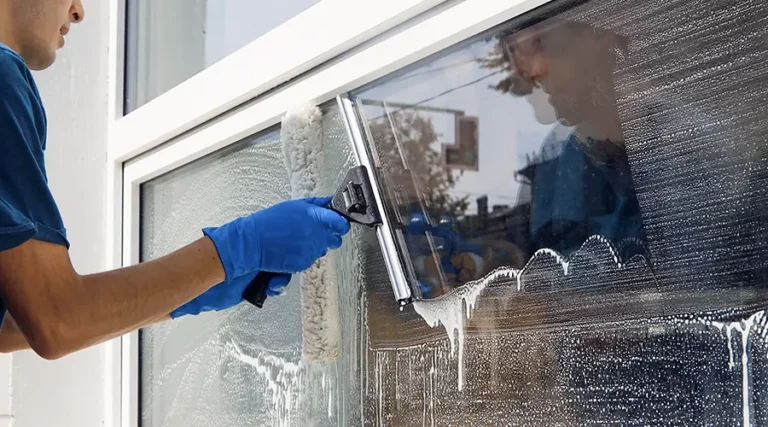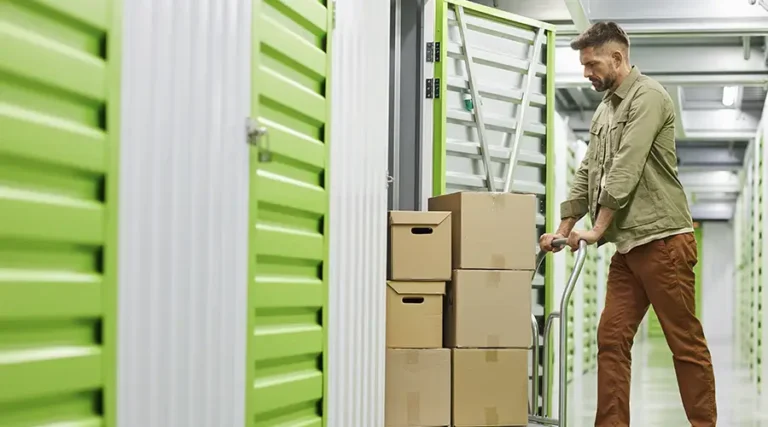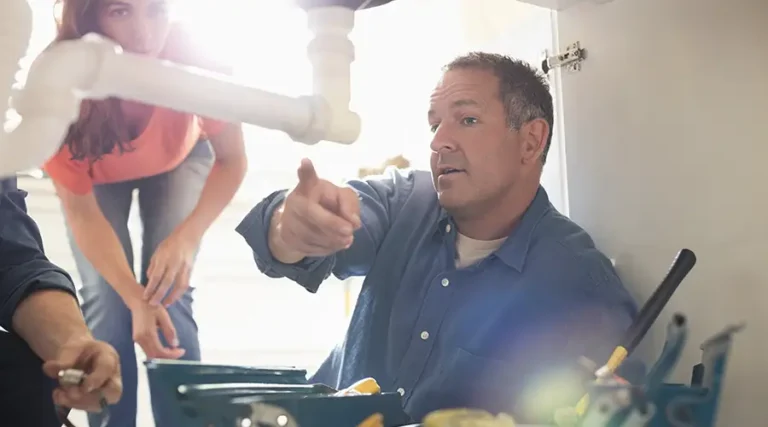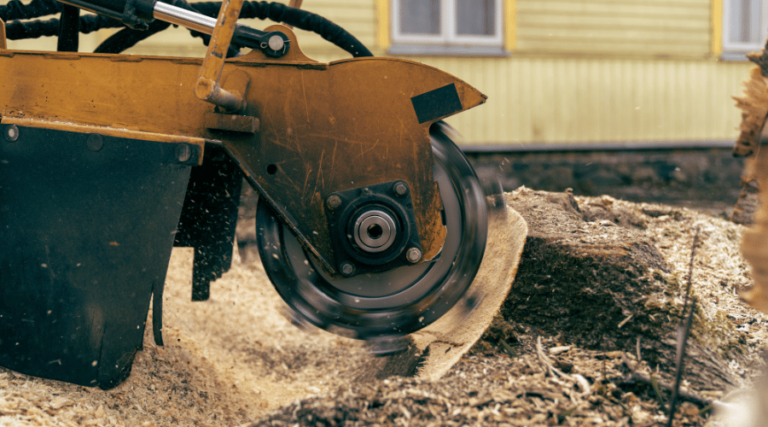How to Start a Junk Hauling Business
You’re about to dive into the dynamic and profitable world of the junk hauling business. Picture this, an industry with a whopping market value of $34 billion, waiting for you to carve out your piece of the pie. But don’t think of it as just hauling away ‘junk’. It’s much more than that. This is a vibrant, necessary service sector that’s woven into the fabric of everyday life.
Consider this little nugget: the average American household creates about 4.4 pounds of trash every single day. That’s a lot of stuff that needs hauling, and they’re spending a tidy sum, around $1,200 per year, to ensure it’s done right. Whether you’re helping someone declutter their garage, or offering a life-saving service for property managers in a pinch, starting a junk removal business can be a rewarding and lucrative venture.
So, how to start a junk hauling business? Well, buckle up! You’re about to embark on an in-depth journey, exploring everything from drafting your business plan and choosing the perfect business name, to navigating the world of business insurance and ensuring your startup costs don’t break the bank. You’ll also need to learn the ins and outs of the industry – the types of junk you’ll encounter, understanding the needs of your local business scene, and so much more.
With this guide, we aim to equip you with the knowledge and tools necessary to not only start your junk removal business but to create a thriving, successful operation. And remember, Rome wasn’t built in a day.
Building a profitable business takes time, patience, and a lot of hard work. But with a solid foundation and a dash of entrepreneurial spirit, there’s no limit to where your junk hauling business can go. Let’s roll up those sleeves and dive in, shall we?
Junk Hauling Keys To Success
Efficient Operations
Streamline your operations to ensure efficient junk hauling services.
Brand Awareness
Establish a strong brand presence in your local market to attract customers.
Customer Service
Deliver exceptional customer service to build loyalty and gain a competitive edge.
Strategic Pricing
Adapt your pricing strategy to the ever-changing market conditions.
In This Article
- Junk Hauling Keys To Success
- Understanding the Junk Hauling Business
- How to Setup Your Junk Hauling Business
- Legal and Operational Considerations
- Equipment and Resources
- Establishing Your Junk Hauling Business
- Branding and Marketing:
- Ensuring Success and Sustainability with Your Junk Hauling Business
- Conclusion: How to Start a Junk Hauling Business
Understanding the Junk Hauling Business
We get it, you’re ready to take the plunge and start your own junk removal business. But first, it’s crucial to understand the lay of the land in this industry. What do junk haulers pick up, and how can you make a profit while contributing positively to your community and the environment? Let’s haul in some answers!
Junk Hauling Industry Overview
Every business starts with understanding the products or services it offers, and in the junk hauling business, your service is all about making other people’s clutter disappear.
So, what exactly counts as ‘junk’?
Typically, it’s the stuff that’s too big for a standard trash pickup, too awkward to handle, or simply too much to manage. Here’s a breakdown of common items that often find their way into the back of a junk removal truck:
- Furniture: Old couches, tables, chairs, beds, and more. If it’s hefty and hard to move, it’s your bread and butter.
- Appliances: From old refrigerators to outdated washer and dryers, these bulky items are a hassle for homeowners to dispose of.
- Construction Debris: This category can range from renovation waste, such as drywall and flooring, to heavier items like concrete or bricks.
Just remember that while one man’s trash might be another man’s treasure, some junk is more than just clutter – it’s an opportunity for recycling or donating.
Recycling and Donating
In your quest to start a successful junk removal business, consider going green and charitable. Not everything you pick up needs to head straight for the landfill.
Many items, like appliances, metal furniture, or construction materials, can be recycled. And those slightly worn but still usable items? They might find a second life through donation to local charities, thrift stores, or community centers. This practice not only reduces your environmental impact but can also position your business as eco-friendly and community-oriented – a winning combination in today’s market.
Business Model and Revenue Streams
Like any business venture, a junk removal business needs a viable, profitable business model. And part of that model involves understanding how junk removal services charge and generate income.
Pricing Methods
In the world of junk removal, businesses typically charge by volume or weight. Here’s how it works:
- By Volume: This method charges customers based on how much space their junk takes up in the truck. For instance, if a customer’s junk fills half the truck, they’re charged 50% of the full load rate.
- By Weight: Some junk removal companies prefer to charge based on the weight of the items. This can be trickier to estimate on the spot, but it might be more suitable for heavy construction debris.
Revenue Streams
So, how much can you make running a junk removal business? Well, the sky’s the limit. The estimated annual revenue for the junk removal industry stands at a hefty $10 billion.
The average price range for junk removal services often falls between $100 to $300 per truckload of junk. However, the final figure can vary greatly depending on your market, the types of items you’re hauling, and any value-added services you might offer, like same-day pickups or recycling services.
Starting a junk removal business can be a lucrative venture. But like any business, it requires a thorough understanding of the industry, a solid business plan, the right licenses and insurance, and a dash of entrepreneurial spirit. With those ingredients in hand, you’ll be well on your way to success in the junk hauling industry. Get ready to roll up your sleeves and start hauling in the profits!
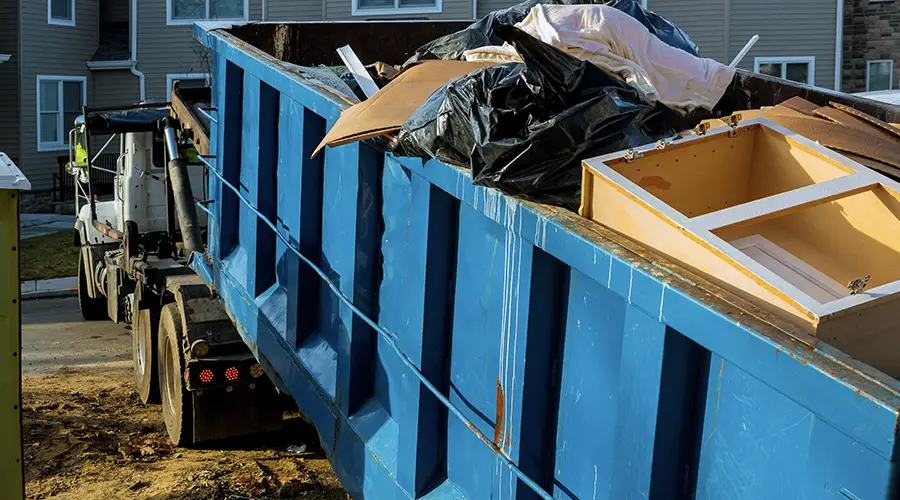
How to Setup Your Junk Hauling Business
With a solid understanding of the junk hauling industry under your belt, it’s time to kick things up a notch. Let’s tackle the nitty-gritty of setting up your junk hauling business – from meticulous planning to getting your hands on the right gear. Ready to roll up your sleeves and get to work?
Research and Planning
Starting a business without proper planning is like setting sail without a compass – you’re bound to drift aimlessly. So, the first step in your journey to becoming a junk hauling mogul is research and planning.
Market Research
Do you know who needs your junk removal services and who else is already providing them in your area? Your answers lie in comprehensive market research. Here’s what you need to focus on:
- Target Demographics: Who are your potential customers? Residential homeowners, businesses, property managers, construction companies – these are all part of your potential client base.
- Competitors: Who’s already operating in your area? Look at both local and national removal businesses, their pricing, and the services they offer. Learning from your competition can help steer your business strategy.
Creating a Junk Hauling Business Plan
A business plan is like your business’s blueprint. It outlines your goals, strategies, and financial projections. Creating a detailed business plan helps you stay focused, and it’s a crucial tool if you’re looking to secure funding. Here are some sections you’ll likely need to include in your plan:
Executive Summary: This is essentially a snapshot of your business plan and should be clear and concise, typically no longer than one page. Despite being at the beginning of your plan, it’s often easier to write this section last, after you’ve fleshed out all the other details. It should include:
- Your business name and location.
- The services you’ll be providing.
- Your mission statement – this outlines your business’s goals in just a sentence or two.
- Basic information about the company’s leadership team.
- A brief overview of your business structure and ownership.
- Your growth plan – do you plan to start with a single truck and expand later? Are you considering franchising down the line?
Company Description: Here’s where you can go into a bit more detail about your business. This section should include:
- The problems your business solves: In this case, you’re providing a solution for people who have unwanted items they need to get rid of.
- Your target market: Who are your potential customers? You could be targeting homeowners, businesses, property managers, or construction companies.
- Your competitive advantage: What sets you apart from other junk removal companies in your area? It could be your commitment to recycling or donating items, your pricing structure, or your exceptional customer service.
Market Analysis: This section should demonstrate that you understand the junk hauling industry and your place within it. It should include:
- An overview of the junk removal industry and its current trends, such as a growing focus on sustainability.
- Information about your target market: their age, location, income level, and what they’re looking for in a junk removal service.
- An analysis of your competition: who are they, what do they offer, and how will you differentiate your services?
Organization and Management: This section outlines your business’s organizational structure. It includes:
- Details about the ownership of your company: names of the owners, their percentage of ownership, and their involvement in the company.
- Information about your team: their roles, backgrounds, and why they are the right people to help run this business.
- An organizational chart can be a helpful visual here.
Services: Clearly describe what services you’ll be offering to your customers. This might include:
- Residential junk removal.
- Commercial junk removal.
- Specialty services, like construction debris removal, appliance removal, or furniture removal.
Marketing and Sales: This section outlines your strategies for attracting and retaining customers. It might include:
- Your branding strategy: What is your business’s personality? How will this be reflected in your name, logo, and marketing materials?
- Your marketing plan: Are you planning to use digital marketing, direct mail, print advertising, or a combination? How will you leverage social media?
- Your sales strategy: How will you convert potential customers into actual customers? Do you plan to offer incentives like discounts for repeat business or referrals?
Financial Projections: This section provides a financial forecast for your business. It should include:
- Startup costs: This would be the cost of your truck, tools, and any other initial expenses.
- An estimate of your ongoing costs: fuel, insurance, marketing, and payroll if you have employees.
- Revenue projections: based on the size of your target market and what you plan to charge, how much do you anticipate earning each month?
- A break-even analysis: When do you expect your business will start to turn a profit?
For each section, there are several online resources available to assist you, including the U.S. Small Business Administration’s Business Plan Guide and templates from websites like Bplans.
Creating a thorough business plan might feel like a massive undertaking, but it’s a crucial step that will guide your business’s direction and growth. Take your time, do your research, and remember: this isn’t just a document for potential investors, it’s a roadmap for your success.
Legal and Operational Considerations
Once your business plan is ready, it’s time to navigate the legal labyrinth.
Registering Your Business and Legal Compliance
Starting a business requires getting a few legal ducks in a row. Here are some key steps you’ll likely need to follow:
- Choose a Business Name: Pick a catchy and memorable business name that isn’t already in use.
- Register Your Business: Depending on your location and business structure, you may need to register with local or federal authorities.
- Get a Business License: You’ll need to secure a business license to operate legally.
- Understand Zoning Laws: Ensure your business operations align with local zoning laws. Some cities may have regulations about where you can park your junk hauling truck.
- Obtain Necessary Permits: You might need specific permits, especially for handling certain types of junk or waste.
Remember, rules vary by location, so it’s wise to consult with a legal professional to ensure you’re on the right side of the law.
Insurance Coverage
No one wants to think about things going wrong, but in business, it’s better safe than sorry. Business insurance can protect you from a variety of risks, from property damage to liability issues. So make sure you secure adequate coverage to protect your new venture.
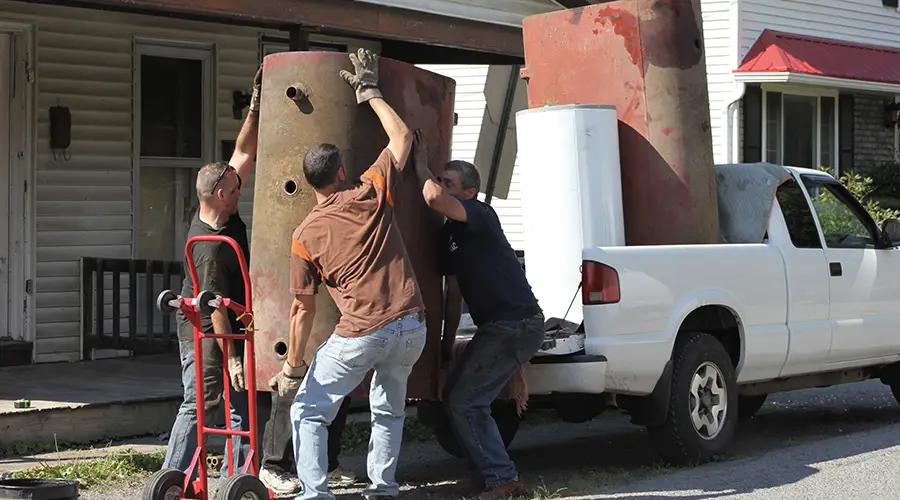
Equipment and Resources
Now that you’ve navigated the legal waters, let’s get down to brass tacks – the equipment and resources you’ll need to start hauling junk.
Essential Equipment
As a junk hauler, your truck is your office, your workshop, and your storefront. But you’ll need more than just a set of wheels. Here’s a list of essential gear:
- Truck or Trailer: A reliable vehicle is non-negotiable. Ensure it’s spacious enough for large items and sturdy enough to handle heavy loads.
- Safety Gear: Gloves, boots, helmets – safety first, always!
- Tools: Items like hand trucks, dollies, shovels, and rakes can make your job easier.
Acquiring Equipment
Purchasing, leasing, or renting – each has its pros and cons, and the best option depends on your business’s needs and financial situation.
- Purchasing: It’s a significant upfront investment, but the equipment is yours to keep.
- Leasing: This option can be more affordable in the short term and often includes maintenance agreements.
- Renting: Ideal if you only need equipment occasionally or want to test out different models before investing in purchasing.
With your business plan in hand, your legal paperwork in order, and your truck ready to hit the road, you’re all set to launch your junk hauling business. It’s time to buckle up and enjoy the ride. Your journey as a junk hauling business owner is about to take off!
Establishing Your Junk Hauling Business
Branding and Marketing:
Ah, the joy of creating a brand. It’s a vital part of your business journey, folks, giving you a chance to really let your creative juices flow. From deciding on a striking company name to crafting an appealing logo, branding is a lot more than just aesthetics. It’s about creating a personality for your business that resonates with your target customers. So, what does a successful junk removal brand look like? It’s professional, reliable, and puts a big emphasis on customer service.
| Branding Elements | Description |
|---|---|
| Company Name | Choose a catchy, memorable name that conveys your business’s services and values. |
| Logo | Create a unique, visually appealing logo that’s easily recognizable. |
| Brand Personality | Define the personality of your business to resonate with your target customers. |
Online marketing, on the other hand, is a whole different beast. In this digital age, having a strong online presence is a non-negotiable for businesses. You’ll need to set up a business website that’s not just informative but also user-friendly and mobile responsive.
| Marketing Methods | Benefits |
|---|---|
| Business Website | Increases visibility, provides information, and builds credibility. |
| Social Media Platforms | Increases exposure, engages with the community, and builds trust. |
| Traditional Marketing Methods | Provides local exposure and reinforces digital marketing efforts. |
Building a Reliable Team:
You can’t run a junk hauling business solo, at least not for long. You’re going to need a reliable team, and finding the right folks isn’t always easy. Start with the basics. You’ll likely need drivers and laborers who can do the heavy lifting. But you’re not just looking for muscle, you want employees who are reliable, have a strong work ethic, and are committed to delivering excellent customer service.
| Team Roles | Description |
|---|---|
| Drivers | Responsible for driving the trucks to collect and dispose of junk. |
| Laborers | Handle the physical aspect of junk removal, including loading and unloading. |
Training is where the rubber meets the road. It’s not enough to just hire people, you need to invest time in teaching them your business’s values and processes. Remember, they’re not just workers – they’re ambassadors for your brand. Make sure they know how to handle junk safely, efficiently, and with a smile on their faces.
Offering Excellent Customer Service:
Alright, let’s talk customer service. It’s one thing to haul junk away, but doing it with a level of service that makes customers sing your praises? That’s where the magic happens. Try to offer prompt services, like same-day or next-day options. You know the saying, “One man’s trash is another man’s treasure”? Well, in this case, one man’s urgent need to get rid of a sofa is your opportunity to impress with speedy service.
| Customer Service Strategies | Benefits |
|---|---|
| Prompt Services | Enhances customer satisfaction and increases chances of repeat business. |
| Professionalism | Builds trust and boosts your business reputation. |
| Follow-up | Ensures customer satisfaction and opens opportunities for feedback. |
Maintaining positive customer relationships is not just about being nice, it’s about being professional, respectful, and helpful. Follow up with customers after a job to ensure they were satisfied with the service. Encourage word-of-mouth referrals by offering a discount on their next service or a small reward. Trust me, a happy customer can be the most powerful marketing tool you’ve got in your arsenal.
Establishing your junk hauling business requires strategic planning, assembling the right team, and cultivating a culture of excellent customer service. But with the right approach, you’ll soon have a successful, lucrative business on your hands. So go on, start making money and enjoy the journey. After all, one person’s junk is your treasure!
Ensuring Success and Sustainability with Your Junk Hauling Business
Now that we’ve covered the nuts and bolts of setting up and establishing your junk hauling business, let’s dive into how to sustain it in the long run. Remember, the goal isn’t just to create a business that flourishes today, but one that will still be thriving years down the line.
Quality Control and Continuous Improvement:
Let’s face it, quality control is a lot like a long-distance run. It can be tedious, it might even make you break a sweat, but it’s absolutely crucial for your business’s health. How can you ensure that your junk removal services are up to snuff? It all boils down to three key things:
| Quality Control Elements | Description |
|---|---|
| Customer Satisfaction Monitoring | Keep a close eye on customer reviews and feedback. Are customers happy with your services? If not, why? |
| Addressing Feedback | Take all feedback, positive or negative, seriously. Address complaints promptly and show your commitment to improving. |
| High-Quality Service Maintenance | Strive to consistently provide high-quality services. This isn’t a one-and-done kind of thing. It’s ongoing work that requires commitment. |
What about improvement? You’ve got to keep pace with the ever-evolving market trends and customer needs. Regular assessments of your business performance are vital for this. Use data and analytics to guide you. Are you hitting your targets? Is there room for growth? The answers to these questions can help you implement changes to your business strategy.
Building a Strong Network:
No business is an island. Building a strong network can be a game-changer for your business. It’s like the old saying, “It’s not what you know, but who you know.” Here are a couple of ways you can do that:
| Networking Methods | Benefits |
|---|---|
| Joining Professional Associations | Offers opportunities to learn from industry veterans and keep up with industry trends. |
| Attending Industry Conferences | Provides chances to learn new strategies, meet potential partners, and stay informed about the industry. |
| Networking with Junk Hauling Professionals | Allows for collaboration, mentorship opportunities, and shared knowledge. |
But networking isn’t just about hobnobbing with other junk hauling professionals. Establishing partnerships with complementary businesses, such as real estate agents or storage facilities, can also be hugely beneficial. These alliances can lead to referrals, thus expanding your customer base and ultimately, your business income.
There you have it! Ensuring the success and sustainability of your junk hauling business isn’t a walk in the park, but with dedication, constant improvement, and a strong network, you’ll be well on your way to creating a thriving, long-lasting enterprise. It’s a big job, but you’ve got this! Now, go on and get that junk out of there!
Conclusion: How to Start a Junk Hauling Business
Starting and running a junk removal business is not a walk in the park, but let’s face it, few things worthwhile ever are. With the right tools, a detailed business plan, and a ton of grit, you can build a thriving junk removal service that could stand the test of time.
As we wrap up this guide, remember the vital steps: begin with a comprehensive junk removal business plan. This blueprint will serve as your North Star, guiding your decisions and giving your business a clear direction. Don’t forget to register your business name, secure the necessary business license, and ensure you’re covered with junk removal business insurance.
In terms of equipment, gear up your team with efficient junk removal equipment to ensure the job gets done professionally. From there, kick off your marketing efforts to get business and start making money. Remember, marketing isn’t just about business cards and flashy advertisements – it’s about establishing a memorable business name and a reliable brand.
Keep in mind that your journey doesn’t stop when you start your junk removal business. Customer satisfaction should be at the heart of your operations. Constant improvement based on feedback and industry trends will help ensure the longevity of your business.
Don’t shy away from learning how to start and run a junk removal business from others in the field. Connect with many junk removal pros, attend conferences, join associations, and don’t hesitate to learn from another junk removal company. They’ve been where you are and can provide invaluable insights.
Keep an eye on your business income and reinvest it to grow your services. Remember, it might be expensive to start, but with careful planning and management, your junk removal business income could exceed your expectations.
Lastly, remember the power of a positive customer experience. It’s your ticket to repeat business and word-of-mouth referrals, two elements that can drastically boost your business’s success.
So there you have it. Now it’s time for you to make your mark in the junk removal industry. Whether you’re hauling away old furniture or clearing out construction debris, you’re providing a valuable service to your community. Here’s to your success in the lucrative business of junk removal – may your journey be filled with learning, growth, and prosperity!
We hope this guide has equipped you with the knowledge and confidence you need to start your journey. So roll up your sleeves, hop into your truck, and start making the world a cleaner place, one junk removal job at a time!


